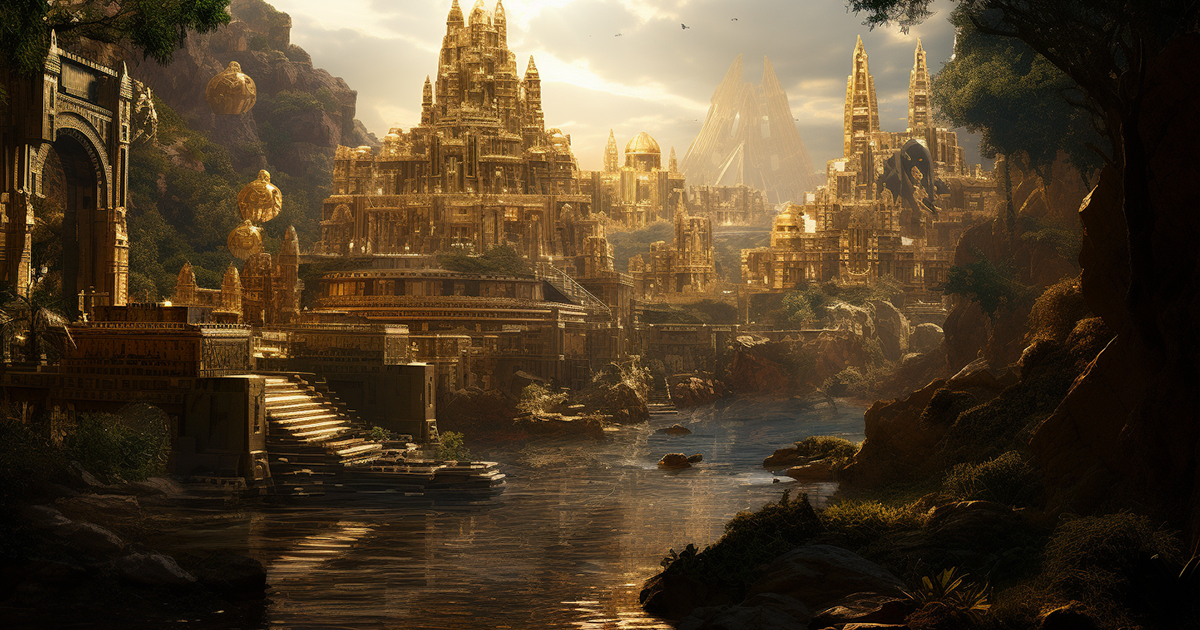In the early 16th century, the world was a vastly uncharted place, brimming with opportunities and mysteries waiting to be discovered. Among those who set sail in search of untold riches were the Spanish conquistadors, driven by a singular obsession: gold.
The year was 1532, and the conquistadors, led by Francisco Pizarro, embarked on a perilous journey to conquer the New World and lay their hands on as much gold as they could find.
The quest for gold was more than just a desire for wealth; it was an all-consuming passion that fueled their every move. As they ventured into the heart of South America, they encountered a sight that would set their imaginations ablaze.
Indigenous people, adorned with golden riches, sparked a frenzy among the Spanish explorers that was unlike anything they had ever witnessed in Europe.
Stories began to circulate, tales of a magnificent city constructed entirely from gold. The Spanish, in their boundless fascination, coined a name for this mythical place: El Dorado, simply translating to “the golden.”
It was a name that would come to symbolize not only their quest for wealth but also the mystery that shrouded the fabled city.
The conquistadors, driven by greed and curiosity, pushed deeper into the unknown. They traversed dense rainforests, crossed swollen rivers, and scaled icy mountains in their relentless pursuit of what they believed to be a hidden city of unimaginable riches.

As they heard more and more stories of El Dorado, the notion that it might not be a mere myth began to take root.
The concept of El Dorado as a real, lost city of gold gained credibility when the Spanish encountered the enigmatic muiska people. These indigenous inhabitants occupied the highlands of the Andes, a region that is now part of modern-day Colombia.
The muiska civilization thrived for over a millennium, starting in 600 A.D., and was a force to be reckoned with, rivalling even the better-known empires of the time, such as the Inca.
One of the most compelling pieces of evidence supporting the existence of El Dorado came from the muiska people themselves. They were masterful goldsmiths, crafting intricate goldworks with remarkable skill.
Thinly pounded gold was transformed into exquisite depictions of animals and deities, reflecting the muiska’s profound connection to the precious metal.
The turning point for the conquistadors was when they learned of a unique ritual performed by the muiska high in the mountains at a place known as Lake Guatavita. In this ceremony, a newly appointed leader would cover his body in a dusting of gold and board a raft, accompanied by priests.
At his feet lay a trove of offerings, including gold and jewels. As the raft floated to the center of the lake, the leader would cast these treasures into the water, diving in himself to wash away the gold dust.
For the Spanish, this ritual hinted at the existence of El Dorado, the lost city they had been relentlessly pursuing. They believed that this ceremony had been performed for centuries by the muiska, suggesting that an ancient city must house the vast reserves of gold used in these sacred rites.
As the conquistadors pressed on in their search for El Dorado, they did indeed find gold—elaborate goldwork crafted by the muiska people. These discoveries tantalized their imaginations, driving them to believe that more riches lay just beyond their grasp.
Video:
Yet, despite their relentless efforts, the true El Dorado remained elusive, forever entwined with the mystique of the unexplored and the allure of the unknown.
In the annals of history, the quest for El Dorado stands as a testament to humanity’s unquenchable thirst for adventure, wealth, and the enigmatic treasures that lie hidden in the heart of uncharted territories.

18 thoughts on “The Lost City of Gold: The Spanish Quest for Elusive Riches”
Comments are closed.